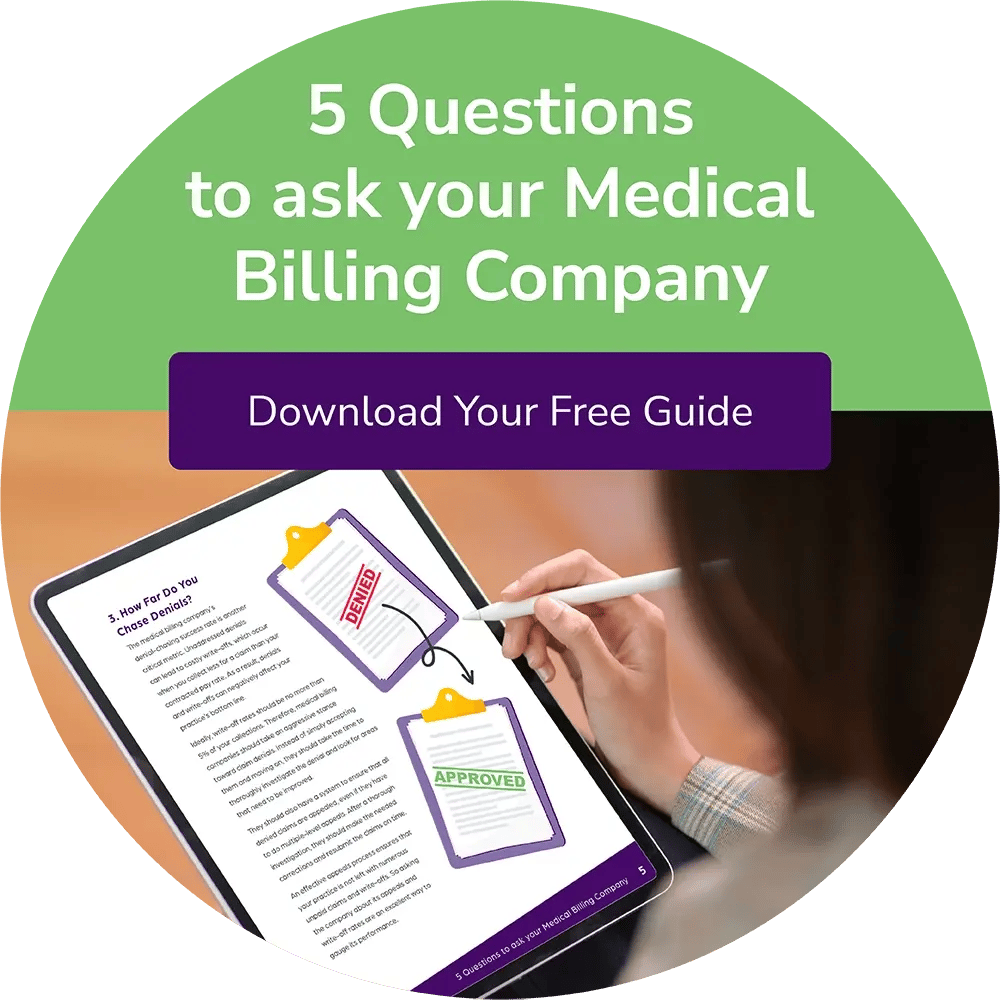How To Optimize the Claim Submission Process in Medical Billing

In the intricate domain of healthcare, medical billing serves as a cornerstone to effective revenue cycle management (RCM).
The claim submission process is a critical component of these steps, forming the pathway from patient registration to final reimbursement. Understanding the claim submission process in medical billing ensures a smooth workflow, helps you avoid claim denials, boosts reimbursement rates, and strengthens your facility's financial health.
What steps are involved in this process, and how can you optimize it? Read on to find the answers.
The 9 Steps of the Claims Submission Process
Navigating the claims submission process can seem daunting. However, there are nine manageable steps to follow for a smooth, efficient claims submission process.
1. Patient Registration
The initial step involves collecting patient demographic and insurance details. Upon a patient's first visit, they will fill out forms to provide you with vital information such as medical history and demographics.
This helps you create a patient's medical record in your healthcare system, which becomes the basis for future transactions and interactions.
2. Insurance Eligibility Verification
Next, you need to verify the patient's insurance eligibility and benefits before you provide services. During this step, you'll confirm active coverage, check benefit options, and understand the patient's cost-sharing responsibilities.
3. Coding of Diagnosis and Procedures
The complex process of medical coding is the next step. After the patient's visit, an administrative staff member or a medical coder assigns specific codes to the diagnosis and procedures performed based on two sets of codes: the International Classification of Diseases (ICD) for diagnoses and the Current Procedure Terminology (CPT) for procedures.
Proper coding is a crucial medical billing process step because it impacts claim approvals and ensures appropriate reimbursement.
4. Charge Capture and Entry
This step involves capturing and entering the appropriate charges for services rendered based on the assigned codes. Charges are determined based on the provider's fee schedule or negotiated rates with the insurance company.
5. Claim Generation
After coding and charge entry, a claim is generated. Claims contain all necessary information about the patient, their diagnosis, treatment received, and cost of services.
These claims represent the formal request for payment from the insurance company.
6. Claim Scrubbing
Before submission, all claims should undergo claim scrubbing. Scrubbing is the process where the claim is meticulously checked for errors or inconsistencies that could lead to a denial.
Automated software can make this step more efficient.
7. Claim Submission
Once scrubbed, the claim is submitted to the insurance company either electronically — which is faster and more efficient — or through paper claims.
8. Follow-up and Reconciliation
After submission, it is essential to track the claim status and follow up with the insurance company to ensure they accept and process the claim.
You should address any issues such as claim denial or underpayment during this step.
9. Claim Payment Posting
When the insurance company pays the claim, it is posted to the patient's account. If you notice any discrepancies between billed and received amounts, you should immediately address them during this step.
How To Optimize the Claim Submission Process in Medical Billing
Elevating the efficiency and accuracy of the aforementioned medical billing process steps is no small task. Here are some key areas upon which to focus to optimize the process.
Ensure Accurate Patient Information
Accurate patient information is the backbone of successful claim submission. Regularly update and cross-check patient data to avoid denials due to misinformation.
Pay Attention to Proper Coding
Proper coding is essential to ensure reimbursement for all provided services. Keep up with the latest coding standards, including the ICD-11 and the current year's CPT code.
You may benefit from outsourcing medical billing to a medical billing company or hiring an expert medical coder to minimize errors that lead to denials.
Submit Claims Promptly
Submit claims as soon as possible after you provide the service. Insurance companies have filing deadlines, and missing these can result in denied claims.
Conduct Regular Follow-Ups
Establish a process to regularly follow up with insurance companies after submitting claims. This helps identify any claim issues and ensures timely reimbursement.
Use Electronic Claims Submission
Whenever possible, you should submit claims electronically. Using an electronic submission method can expedite the process and reduce errors. It also allows you to track submitted claims.
Simplify the Claims Submission Process With a Trusted Medical Billing Partner
Medical billing can be complex, but it does not have to be another burden on your already full plate. Simplifying and optimizing your claim submission process steps in medical billing can significantly boost your RCM, allowing your practice to thrive financially.
If you are ready to optimize your claim submission process, consider partnering with PUREDI, a renowned provider of medical billing services across the United States. Our expertise and software can streamline your billing process so you can focus on what truly matters — delivering outstanding patient care.
Contact us today to experience a revolutionized approach to medical billing and propel your practice toward financial stability and growth
Blog Post Tags
Claim ScrubbingGet Awesome Content Delivered Straight to Your Inbox!
Posts by topic
- RCM
- Medical Billing Software
- Outsource Your Medical Billing
- Compliance
- Physician Billing Services
- Denial Management
- AI
- Data Analytics
- EHR
- ERA
- reporting
- Automation
- Business
- Claim Scrubbing
- Coding
- Community
- Events
- LTPAC
- Medical Billing Companies
- Medicare
- Press Release
- Revenue Cycle Management
- business development
- clearinghouse See All See Less





